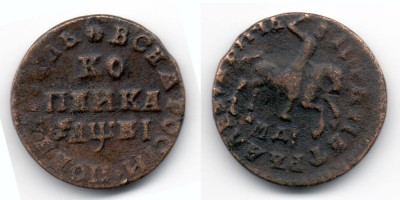Russian coins of the Tsar period provided commodity-money relations both within the state and in the foreign market. The Mint was completely controlled by Peter the Great.
Raw materials for minting coins used traditional:
- gold (gold pieces (including double, 2 rubles);
- silver (the most common coin of this material is the ruble; prior to the discovery of the mines, Peter I ordered to save silver);
- copper (the most “consumable” coins were minted from copper, of which 5 kopecks and deng were used most often by the people).
In addition, Peter the First, in an effort to make the settlement system more flexible, periodically put into circulation "experimental" banknotes, which. For example, during this period, the so-called "trial" coins are introduced.
Among them were grivennik, and the underman, and the popular silver 2 rubles. In the case of justified presence on the market of "trial" coins, they were left in the Russian monetary system.
The coin-shaped tokens entered by Peter the Great, in honor of any event in the country and had an ideological burden. For example, a coin-like token devoted to the “Memory of the Coronation of Empress Catherine the First” is in great demand among collectors.
Showing 1 to 1 of 1 (1 Pages)
 Russian
Russian English
English Deutsch
Deutsch Spanish
Spanish Português
Português


